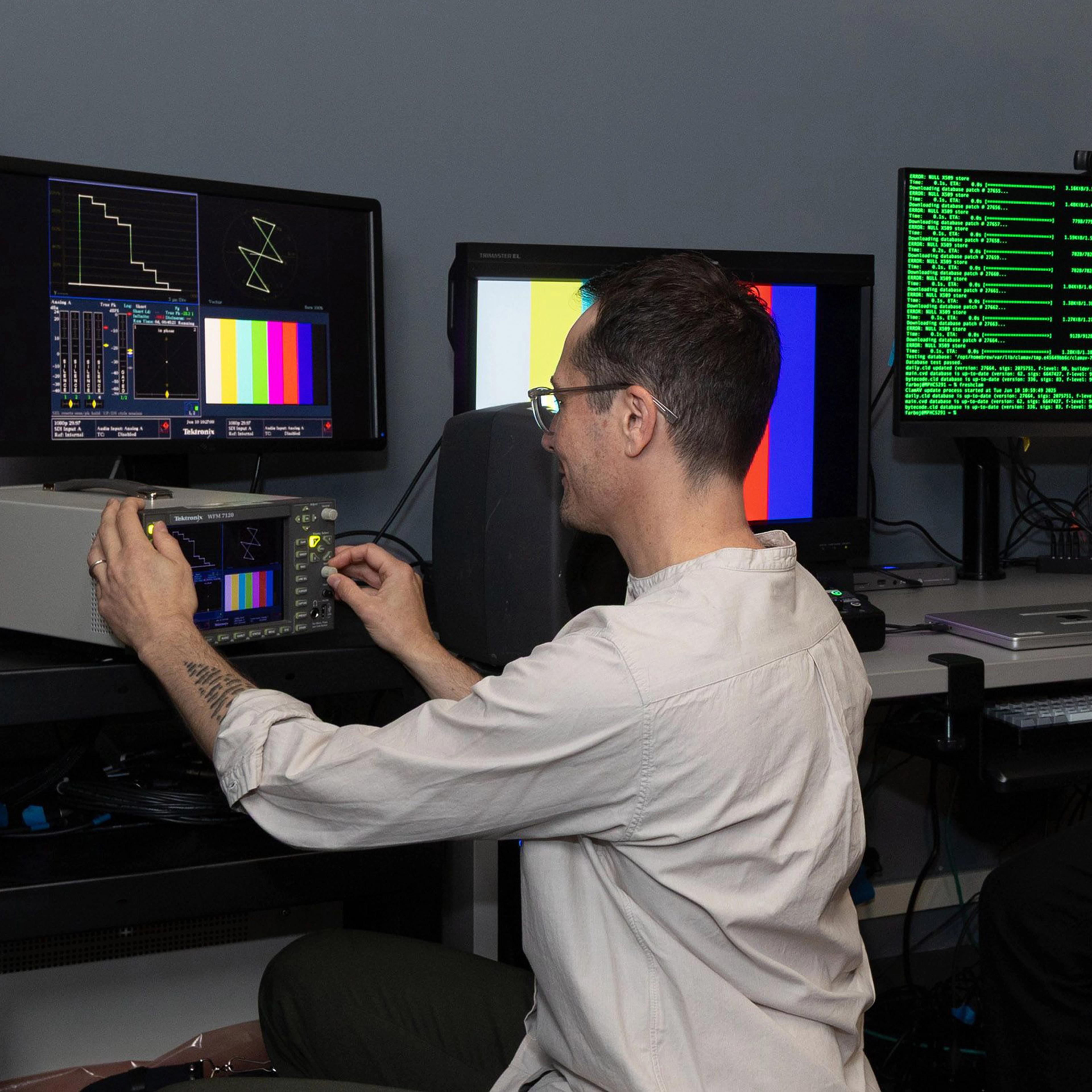Time-Based Media Conservation
About Us
The Photograph and Time-Based Media Conservation Department is dedicated to conserving and researching artworks in The Met collection that span from the earliest photographic experiments through the emergence of the digital era to the present day. The Department is part of the Sherman Fairchild Center for Works on Paper, Photograph, and Time-Based Media Conservation, which also includes our colleagues in Paper Conservation and Photograph Conservation.
Time-based media (TBM) conservation ensures that artworks using film, video, audio, software, slide projectors, and other durational technologies are preserved for future generations to experience. Starting in 1999, the Museum has assembled a significant collection of time-based media art comprising over three hundred individual artworks by renowned contemporary artists. Just like any other artwork, these works must be cared for and maintained, but time-based media artworks have unique vulnerabilities. Conservators develop active strategies for preservation, using their expertise in areas such as video production, computer programming and other digital technologies, electronics, and equipment repair to address conservation needs and anticipate risks.
The department is committed to strengthening and expanding the fields of photograph and time-based media conservation through education and mentorship. We regularly welcome pre-program and graduate interns to our lab through the Education department's program for paid internships. This provides an unparalleled opportunity to work side by side with conservators in a lab actively engaged in conservation, preventive conservation, and research.
On occasion, the department has accepted Junior Conservation Fellows for a one-year fellowship. Unlike Senior Fellows, these applicants are not required to submit a specific research proposal. These fellowships are open to applicants who have recently completed graduate-level education.
Please reach out to photographconservation@metmuseum.org to inquire about our current internship opportunities.
Time-based media (TBM) conservation at The Met began as a response to the emerging collection of these artworks by multiple curatorial departments. The Met began assembling a collection of TBM art in 1999, and started to exhibit these pieces in the early 2000s. However, specialized procedures and dedicated staff did not exist at the time to address the challenges of collecting and exhibiting TBM artworks. For many years, staff at the Museum in Photograph Conservation (Nora Kennedy), Film & Media (Jessica Glass, Robin Schwalb, and Paul Caro), and the Department of Photographs (Douglas Eklund and Malcolm Daniel) advocated hiring individuals with expertise in this unique area of conservation specialization. During these years, audiovisual staff, collections staff, fellows, and occasional contract conservators, were engaged in addressing the collection's most urgent needs.
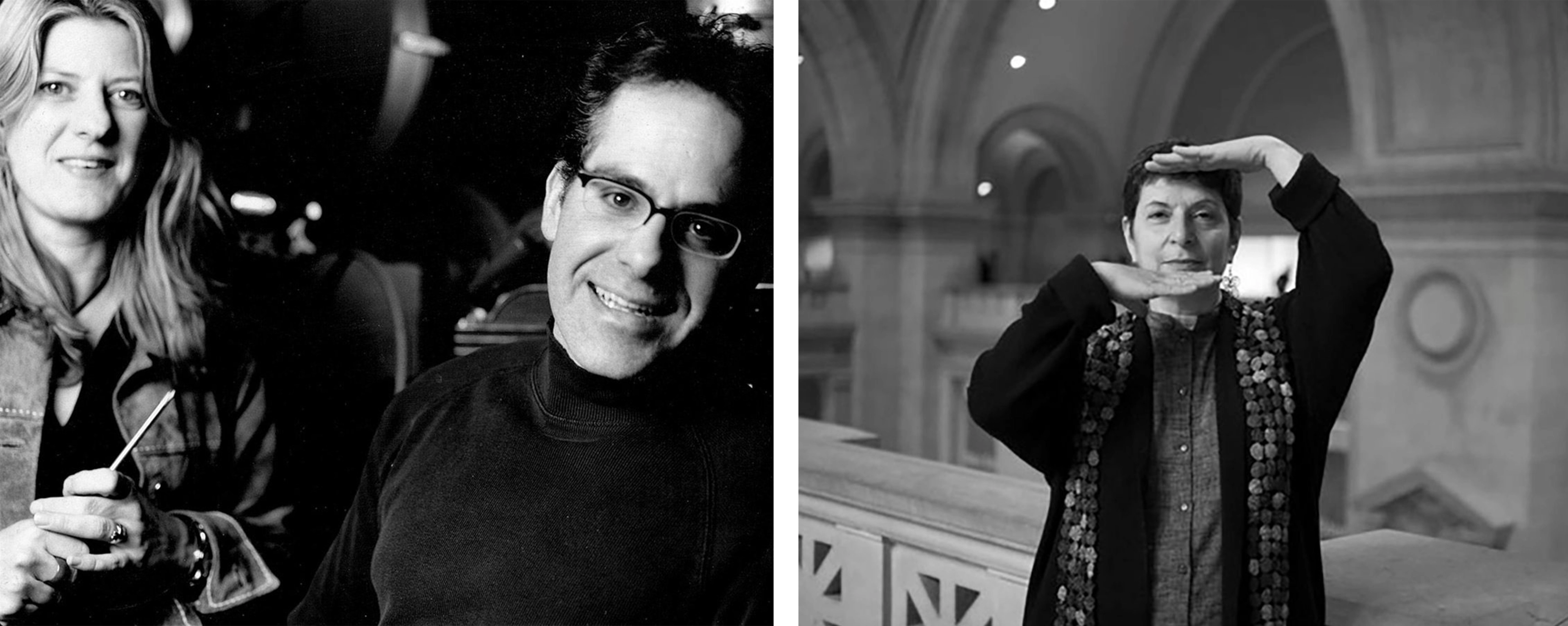
Jessica Glass (left), Paul Caro (center), and Robin Schwalb (right) from Film & Media in the Education Department were among the first Met staff members to recognize the preventive conservation needs of time-based media and partnered with Nora Kennedy, Douglas Eklund, and Malcolm Daniel, to form the initial TBM "support group" in 2001. Photos: Jackie Neale.
In 2001, a small “support group” of the individuals from conservation, curatorial, and technical services at The Met began meeting to discuss the challenges of acquiring and caring for TBM art. In 2010, under the leadership of Jessica Glass, the group officially became The Met's Time-Based Media Working Group. Subsequently, under Anna Wall, Meredith Reiss, and Catherine Burns, it grew to include members from across the museum and laid the groundwork for TBM acquisition, exhibition, and documentation procedures and policies. With input from members of the group, these policies were then further developed by Alex Nichols, The Met's first fellow to work specifically in TBM conservation.
A collection-wide TBM assessment and survey was carried out from 2016 to 2018 by outside consultant Glenn Wharton, assisted by Lorena Ramírez-López, a graduate of New York University's Moving Image Archiving Preservation Program, and Lia Kramer, a graduate of Institute of Fine Arts’ Conservation Center, and through the efforts of internal colleagues, including Mollie Anderson, Nora Kennedy, Milo Thiesen, and Alex Nichols.

Lia Kramer and Lorena Ramírez-López engaged in the item-by-item survey that was part of the 2018 institutional assessment focused on the state of time-based media conservation practices at The Met. Photo: Naoise Dunn
As a result of the assessment and consistent advocacy efforts, in December 2019, Jonathan Farbowitz was hired as The Met's first Associate Conservator of Time-Based Media thanks to generous support from the Keighley Foundation through The Met's Digital Department. These funds also paid for setting up a TBM conservation lab hosted within the Imaging Department. The Keighley Foundation as well as Jade Lau and Mary Jaharis supported this essential position for its initial four and half years. In 2024, the Associate Conservator of Time-Based Media position was made permanent, signaling a new and important phase in the acquisition and care of contemporary art at The Met.
Proper equipment and facilities are essential for studying, documenting, and treating time-based media artworks, which employ both contemporary and older technologies. The Department of Photograph and Time-Based Media Conservation's lab facilities include a seminar room, imaging station, and treatment tables. A separate dedicated time-based media (TBM) conservation lab space is located within The Met’s Imaging Department. In addition to the lab space, TBM conservation maintains a full complement of tools for working on film and electronics, as well as a study collection of media formats.
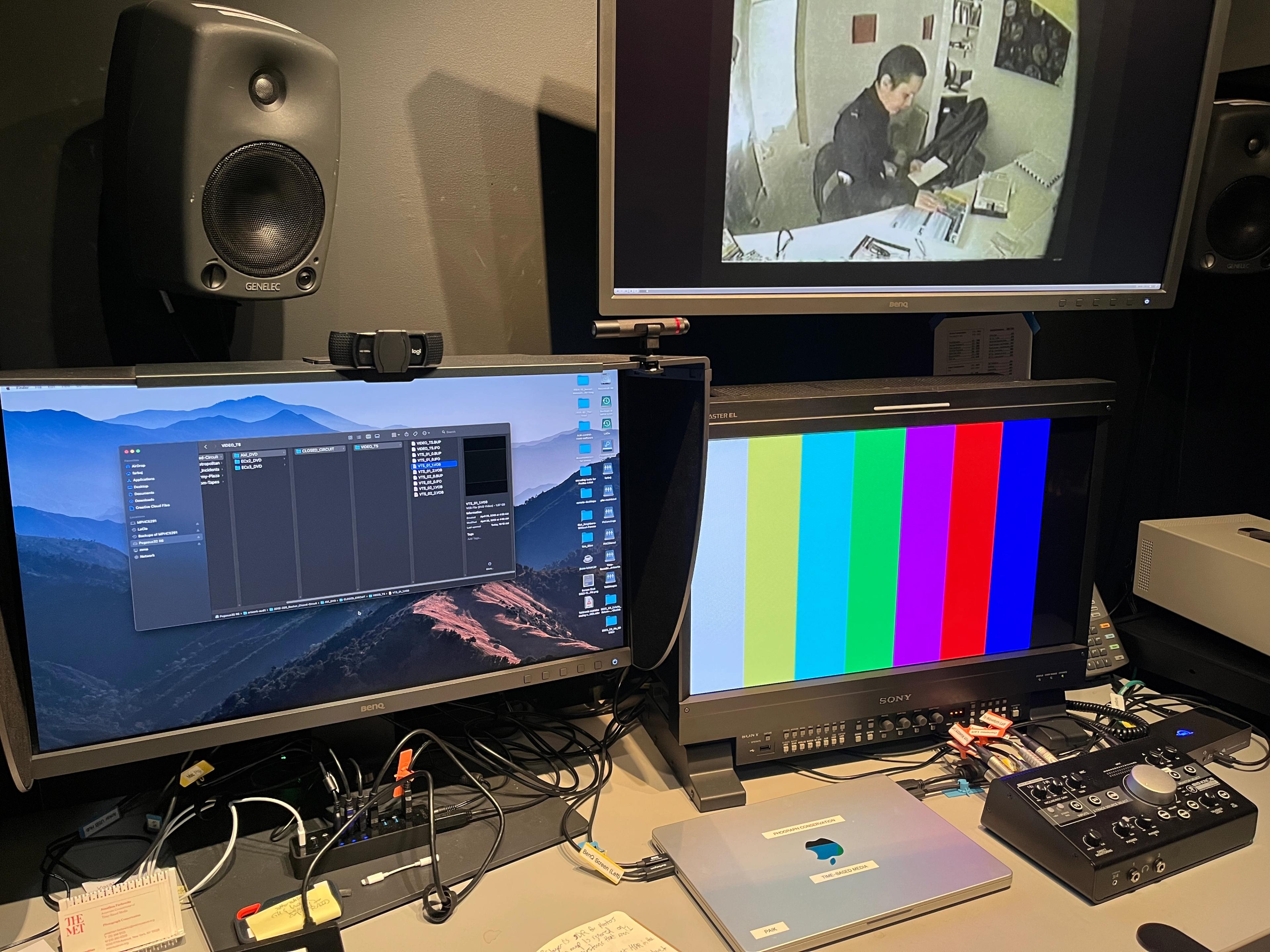
The Met’s first time-based media conservation lab space, which existed from 2021 to 2024. Photo: Jonathan Farbowitz
The space for a TBM conservation lab was first identified in 2019 within the Met’s Imaging Department. This small area was outfitted with equipment and became operational in 2021. In 2024, following a department-wide renovation, the lab moved into a larger space, still within the Imaging Department.
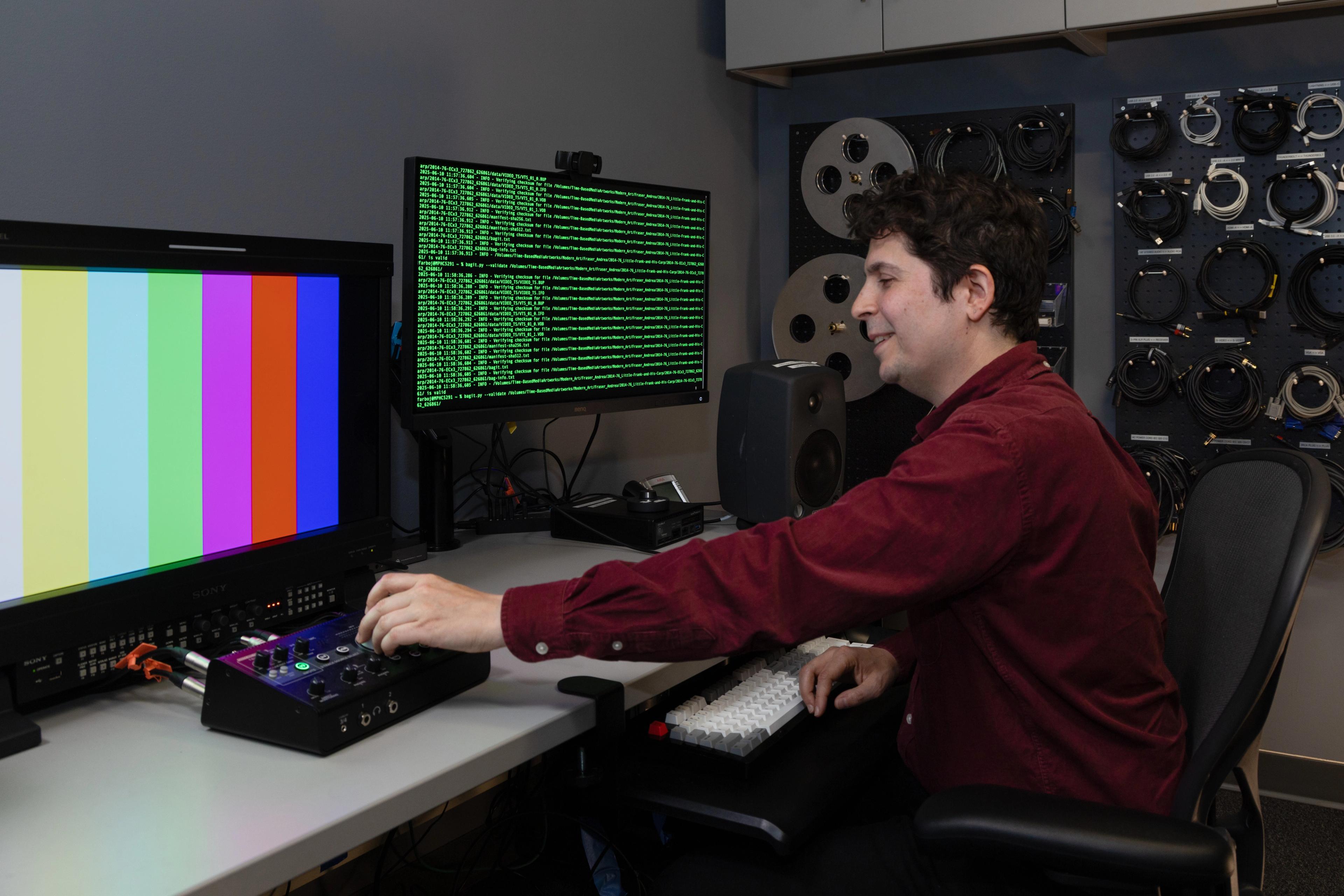
Jonathan Farbowitz in the current time-based media conservation lab. Photo: Hyla Skopitz
The lab centers around two computer workstations: one for the close viewing and examination of artworks, and another for digital preservation and storage management. The close viewing and listening station is equipped with multiple calibrated video monitors for condition assessment of high definition (HD), standard definition (SD), 2K, and 4K video content. It also includes reference speakers and headphones for audio evaluation, a digital waveform monitor and vector scope for analyzing video and audio signals, write-blocking devices, and a RAID drive for working storage. The digital storage management station supports interaction with the museum’s on-site digital artwork storage. After thorough examination of an artwork, its digital components are synced to the museum’s long-term storage system. The lab also features a Linux laptop that runs the BitCurator environment, used for disk imaging and other digital forensics tasks.
This setup allows conservators to closely assess an artwork’s condition, determine appropriate next steps for its care and preservation, and transfer artwork-related digital files to safer storage.
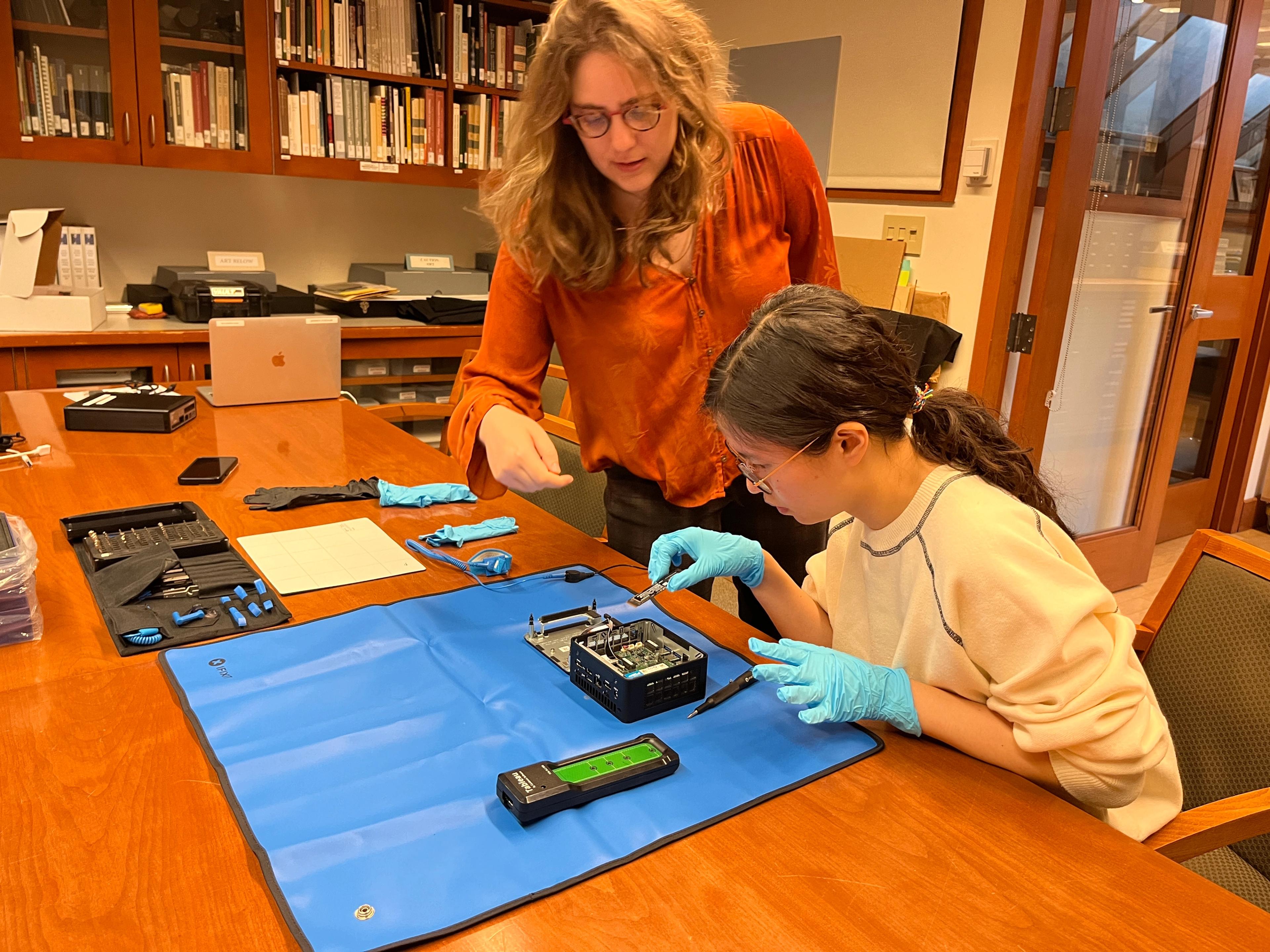
Tess Hamilton (left) and Jenny Hsu using specialized tools to remove the hard drive from an artist-provided computer so that its contents can be backed up. Photo: Jonathan Farbowitz
Additional lab equipment includes tools for electronics testing, repair, and soldering, as well as inspection and splicing tools for 35mm and 16mm film. The lab also maintains a study collection consisting of various contemporary and obsolete media formats, including analog video and audiotapes, optical media, and floppy disks, used for educational, research, and testing purposes.
Read Our Latest Newsletter, November 2025 No. 40
Photograph and Time-Based Media Conservation at The Met: A History in Landmarks; The Team Today; Celebrating Our Alumni; Lab Bibliography
Research
Jonathan Farbowitz and Sasha Arden present on the multi-year, interdepartmental endeavor to conserve Jennifer and Kevin McCoy's Every Shot, Every Episode, 2001—a custom digital video playback installation with 277 video compact discs—returning it to exhibition readiness for the first time in more than a decade.
Opportunities
- Undergraduate Internship
- Junior Conservation Fellowship
- Graduate Internship
- Senior Conservation Fellowship
Articles, Audio, and Video
Featured
The Latest
Turn Up the Volumes
- Immaterial | Audio
Immaterial: Time
- Video
Meet the Artist—The Great Hall Commission Jacolby Satterwhite
- Video
Contemporary Artist William Wegman on His Video Art from 1970–99 | MetCollects
- Video
Developing a Time-Based Media Strategy at The Met
Introducing The Met's Time-Based Media Working Group
